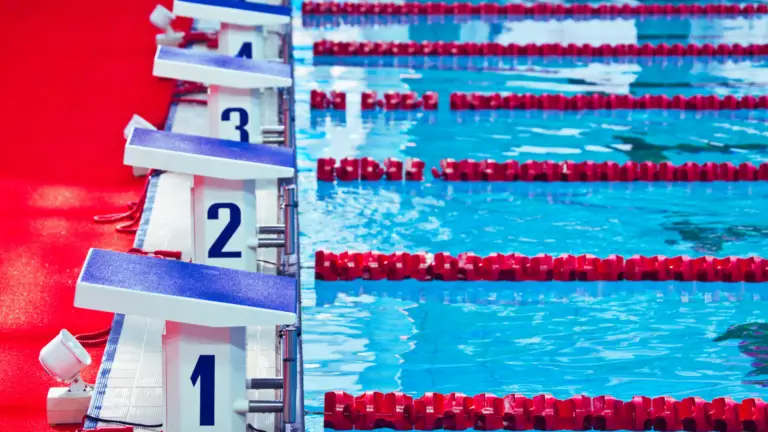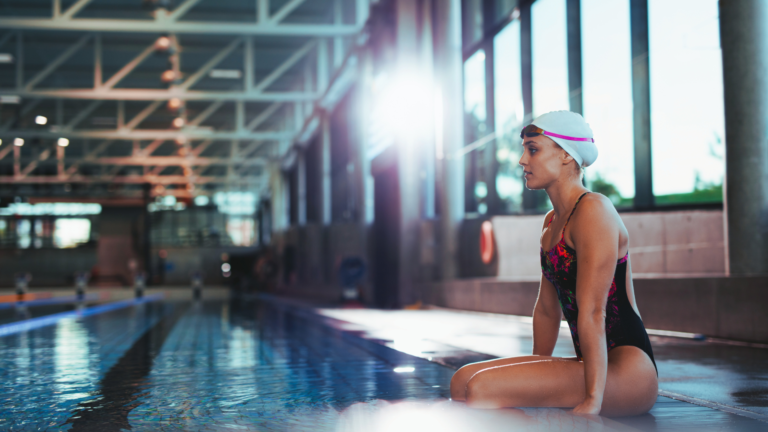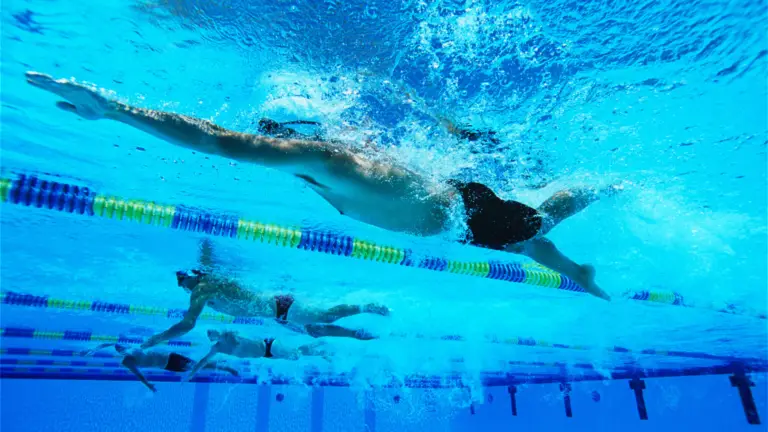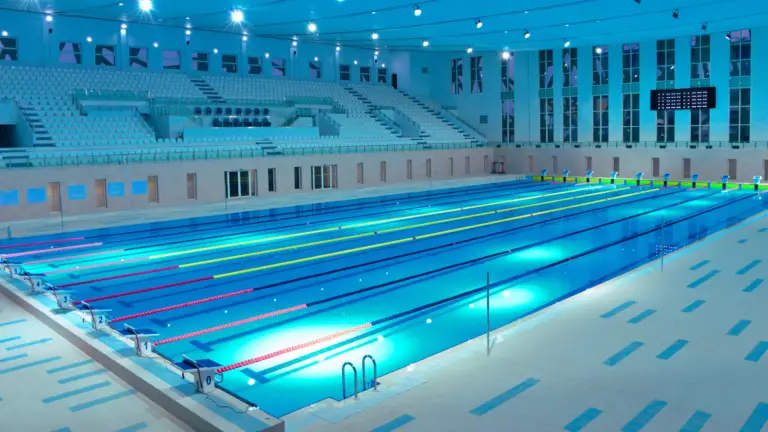In the world of competitive swimming, speed is everything. It’s the difference between standing on the podium with a medal around your neck and watching from the sidelines. It’s the culmination of countless hours of training, perfecting your technique, and pushing your body to its limits. But not all swimming styles are created equal when it comes to speed. So which swimming stroke is the fastest?
Different swim strokes have varying speeds, and understanding these differences can help you become a more effective and efficient swimmer. Whether you’re a seasoned swimmer looking to shave a few seconds off your time or a beginner trying to figure out which stroke to focus on, this article is for you.
Understanding Swimming Strokes
Swimming is a complex sport with various strokes, each with unique characteristics and techniques. The four main strokes used in competition are the freestyle, butterfly, backstroke, and breaststroke. Let’s dive into each of these strokes and explore what makes them unique.
Freestyle – The Fastest Swim Stroke
Freestyle, also known as the front crawl, is generally considered the fastest swim stroke. It’s the first stroke that most swimmers learn and the one that’s used most frequently in competition.
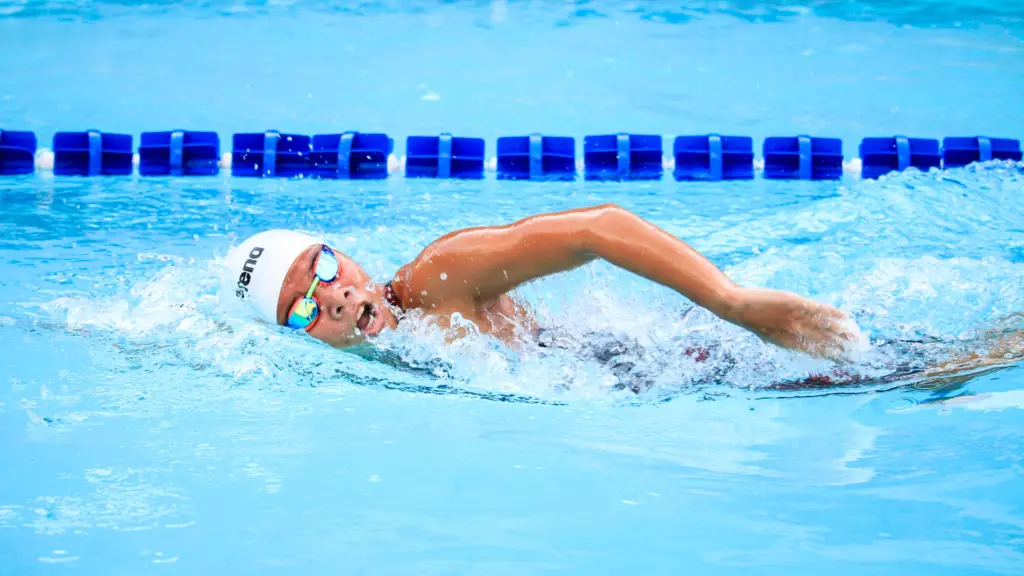
Key characteristics of the freestyle stroke include:
- Arm Stroke: Swimmers use an alternating arm motion to propel themselves through the water. The arm pull starts at the front and ends at the hip, with the hand exiting the water thumb-side first.
- Kick: The flutter kick, a simple up-and-down motion of the legs, helps to maintain body position and provide additional propulsion.
- Breathing: Swimmers turn their heads to the side to breathe in time with arm strokes.
Freestyle is the fastest swimming stroke because it allows for continuous propulsion through the water. The alternating arm strokes mean that there’s always one arm pushing you forward. Plus, the streamlined body position reduces drag, allowing swimmers to move through the water more efficiently.
Butterfly – The Second Fastest Stroke
The butterfly stroke is often considered the most difficult stroke, but it’s also the second fastest. It’s a stroke that uses a lot of energy, but when done correctly, it can result in impressive speed in the water.
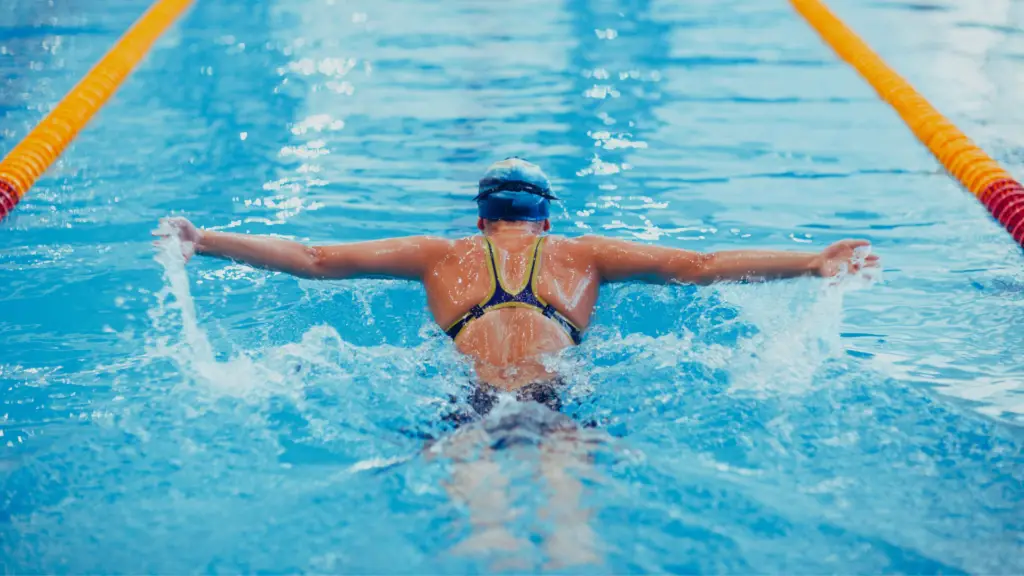
Key characteristics of the butterfly stroke include:
- Arm Stroke: Both arms move simultaneously in a circular motion, entering the water in front of the swimmer and exiting towards the hips.
- Kick: The dolphin kick, a simultaneous up-and-down motion of both legs together, provides the primary propulsion in the butterfly stroke.
- Breathing: Swimmers lift their heads to breathe as their arms come out of the water.
The butterfly stroke is faster than the backstroke and breaststroke but slower than freestyle. The simultaneous arm pull and dolphin kick can generate a lot of power but also require a lot of energy. This makes the butterfly a challenging stroke to maintain over long distances.
Backstroke – The Third Fastest Stroke
Backstroke is unique as it’s the only one of the four strokes swum on the back. It’s slower than freestyle and butterfly but faster than breaststroke.
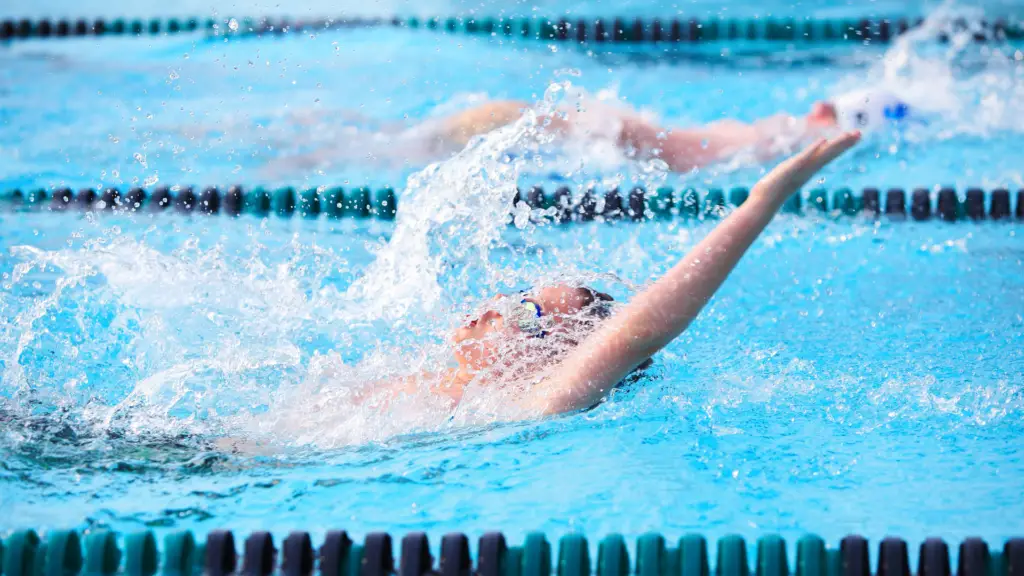
Key characteristics of the backstroke include:
- Arm Stroke: Like freestyle, backstroke uses an alternating arm motion. However, the arms move in a windmill motion, entering the water little finger first.
- Kick: The flutter kick is used in backstroke, just like in freestyle.
- Breathing: Since the swimmer’s face is out of the water, breathing can be done freely in backstroke.
Backstroke is slower than freestyle and butterfly because the body position creates more drag. However, the continuous arm motion and flutter kick still allow for a decent speed in the water.
Breaststroke – The Slowest Stroke
Breaststroke is by far the slowest of the four strokes. It’s often the first stroke taught to beginners because it allows for easy breathing and a stable body position.
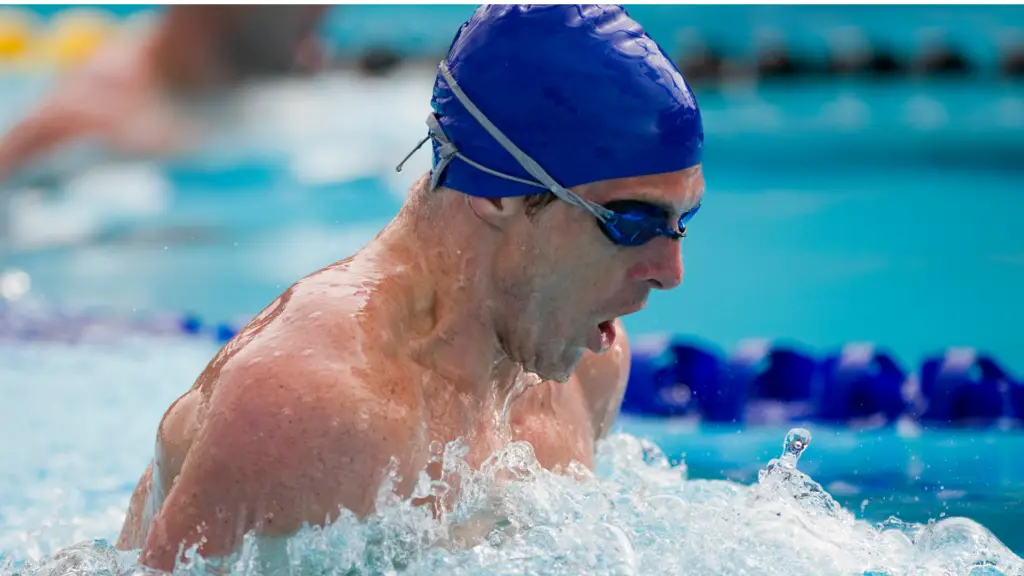
Key characteristics of the breaststroke include:
- Arm Stroke: The arms move simultaneously in a half-circle motion from the front of the body to the sides. This is often described as a “frog” or “scoop” motion.
- Kick: The whip or frog kick is used in breaststroke. The legs bend at the knees and then extend backward and together, mimicking the motion of a frog.
- Breathing: Swimmers lift their heads to breathe as their arms pull, keeping their heads above water.
The breaststroke is the slowest stroke because it creates a lot of drag. The wide arm pull and frog kick break the streamlined body position, slowing the swimmer down. However, the breaststroke is a great way to get started with swimming, and it’s a stroke that can be easily maintained over long distances.
The Fastest Swimming Stroke: Freestyle
When it comes to speed, the freestyle stroke reigns supreme. It’s the go-to stroke for swimmers looking to achieve maximum speed in the water. But what makes freestyle the fastest swim stroke? Let’s dive into the details.
Mechanics of Freestyle
The speed of the freestyle stroke is largely due to its mechanics. Here are the key elements that contribute to its speed:
- Continuous Propulsion: In freestyle, one arm is always in motion, creating a continuous propulsion that keeps the swimmer moving forward without interruption. This is unlike other strokes where moments of ‘glide’ can slow a swimmer down.
- Streamlined Body Position: The body position in freestyle is horizontal and flat, reducing drag and allowing the swimmer to cut through the water more efficiently.
- Efficient Kick: The flutter kick used in freestyle is a simple and efficient kick that helps to maintain body position and provide additional propulsion.
Technique and Speed
The technique used in freestyle also plays a significant role in its speed. Here are some key technique points:
- Arm Pull: The arm pull in freestyle starts at the front and ends at the hip, with the hand exiting the water thumb-side first. This long pull allows for maximum propulsion.
- Breathing: In freestyle, swimmers turn their heads to the side to breathe in time with arm strokes. This allows for continuous swimming without interrupting the stroke for breath.
Freestyle in Competitive Swimming
Freestyle is the stroke of choice in competitive swimming when speed is the goal. It’s the stroke used in the longest and shortest race distances, from the 50m sprint to the 1500m endurance swim. It’s also the stroke that’s used in the freestyle relays and the majority of the individual medley.
Chasing Speed: The Butterfly Stroke
The butterfly stroke is often seen as the most challenging of the four strokes, but it’s also a contender for the fastest stroke. Let’s explore the unique characteristics of the butterfly stroke and how it generates speed in the water.
The Unique Characteristics of Butterfly
The butterfly stroke is unique in its movement and technique. Here are some of its key characteristics:
- Simultaneous Arm and Leg Movements: In butterfly, both arms move together, as do the legs. This simultaneous movement generates a lot of power, but it also requires a lot of energy.
- Undulating Body Movement: The body moves in an undulating, dolphin-like motion in butterfly. Combined with the powerful dolphin kick, this movement can generate a lot of speed.
The Challenges of Butterfly
Despite its potential for speed, the butterfly stroke is not without its challenges:
- Energy Consumption: The butterfly stroke uses a lot of energy. The simultaneous arm pull and dolphin kick require a lot of strength and can quickly tire out a swimmer.
- Technique Difficulty: The butterfly stroke requires precise timing and coordination. The undulating body movement and simultaneous arm and leg movements can be difficult to master.
Generating Speed in Butterfly
Despite these challenges, the butterfly stroke can generate a lot of speed in the water. The key is in the power generated by the simultaneous arm pull and dolphin kick. When done correctly, these movements can propel a swimmer through the water quickly. However, maintaining this speed over long distances can be challenging due to the energy consumption of the stroke.
In conclusion, while freestyle holds the title for the fastest swimming stroke, the butterfly stroke is a close second. Both strokes have unique characteristics and challenges; understanding these can help swimmers improve their speed and efficiency in the water.
The Underwater Dynamo: Dolphin Kick
One of the most powerful tools in a swimmer’s arsenal for speed is the dolphin kick. Often called the “fifth stroke,” the dolphin kick is an underwater swimming technique that can significantly contribute to a swimmer’s speed.
Mechanics of the Dolphin Kick
The dolphin kick involves a simultaneous, undulating movement of both legs, similar to the way a dolphin or mermaid might swim. Here are some key points about its mechanics:
- Body Movement: The movement starts at the chest and flows to the hips, with the legs following in a whip-like motion. The body moves in a wave-like, undulating pattern.
- Kick: Both legs kick together in an up-and-down motion. The down kick is the power phase, propelling the swimmer forward, while the up kick sets up the next down kick.
Benefits of the Dolphin Kick
The dolphin kick offers several benefits:
- Speed: The dolphin kick is one of the fastest ways to move underwater. It’s often used after the start and after each turn to take advantage of this speed.
- Efficiency: While the dolphin kick requires good core strength, it can be more energy-efficient than surface swimming when done correctly.
- Versatility: The dolphin kick is used in both the butterfly stroke and in the underwater phases of all the other strokes.
Comparing Speed: Backstroke and Breaststroke
While backstroke and breaststroke may not be as fast as freestyle and butterfly, they each have unique aspects that make them essential components of competitive swimming.
Backstroke: The Upside-Down Freestyle
Backstroke is essentially freestyle flipped over. Swimmers are on their backs, and the arm movements are similar to those in freestyle. Here’s what you need to know about backstroke:
- Speed: Backstroke is slower than freestyle and butterfly but faster than breaststroke. The body position creates more drag, which slows the swimmer down.
- Advantages: Backstroke allows for easy breathing since the face is always above water. It also provides a good balance to the muscle use in other strokes.
Breaststroke: The Power of Technique
Breaststroke is the slowest of the four strokes, but it’s also one of the most technical. Here are some key points about breaststroke:
- Speed: The wide, sweeping movements of the arms and legs in breaststroke create a lot of drag, which slows the swimmer down.
- Advantages: Breaststroke allows for regular breathing and a stable, comfortable body position. It’s often the first stroke taught to beginners, and it’s a great stroke for building endurance.
In conclusion, while backstroke and breaststroke may not be the fastest strokes, they are essential components of a well-rounded swimming skill set. Each stroke has its unique advantages and can contribute to a swimmer’s overall performance and endurance in the water.
FAQs
Conclusion
In the world of swimming, speed is a crucial factor. However, it’s important to remember that the fastest stroke—freestyle—isn’t necessarily the best stroke for everyone. Each of the four main strokes—freestyle, butterfly, backstroke, and breaststroke—has its unique characteristics, advantages, and challenges.
While freestyle is generally the fastest, the butterfly stroke can also generate impressive speed. Backstroke and breaststroke may be slower, but they offer benefits like easy breathing and technical skill development.
Ultimately, the best way to improve your swimming speed is to practice and refine your technique in each stroke. A well-rounded swimmer is not only fast but also versatile, able to switch between strokes as needed. So, whether you’re aiming to be the fastest swimmer in the pool or simply looking to improve, remember to explore and practice different strokes. Happy swimming!

